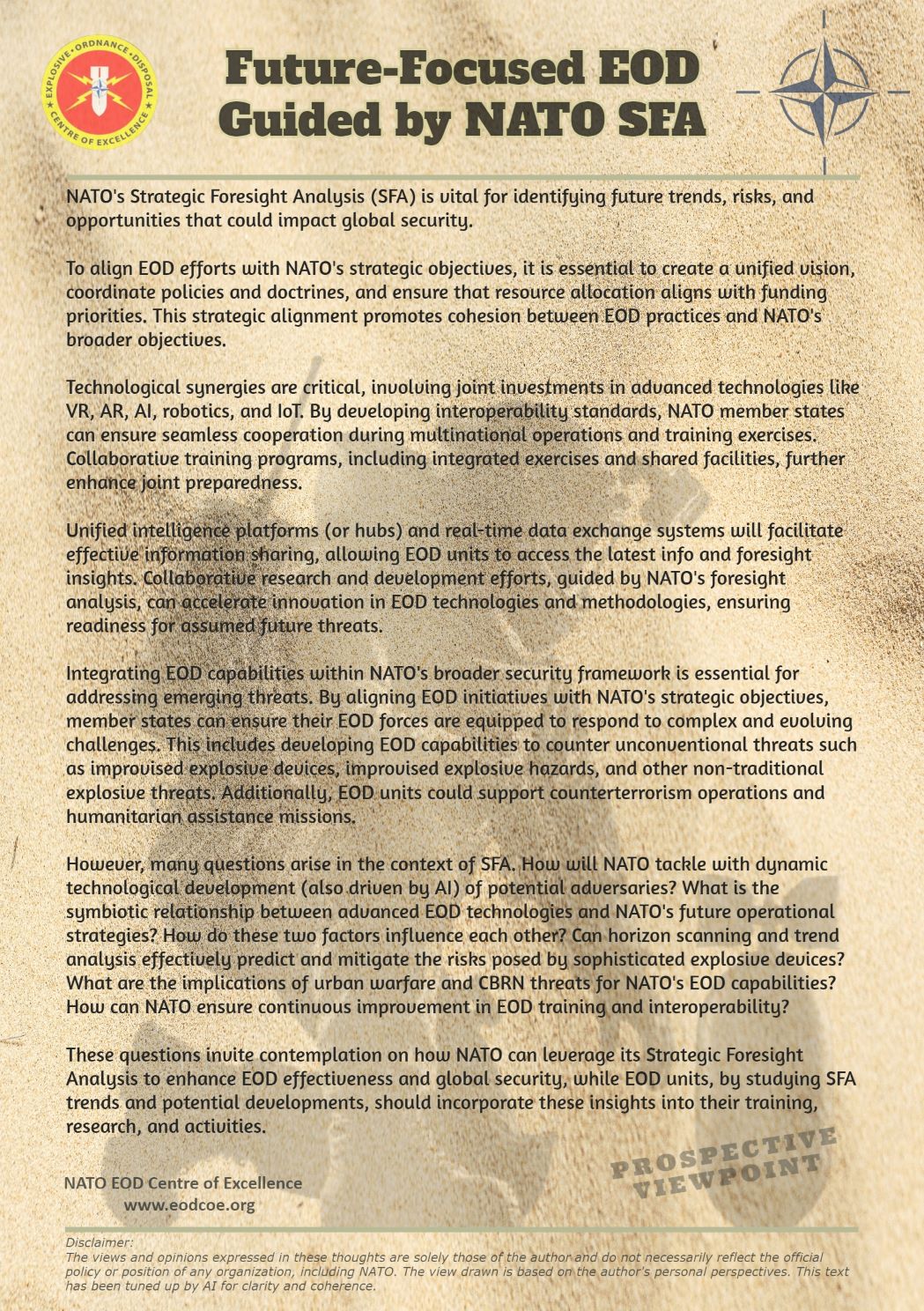
Future Focused EOD Guided by NATO SFA
NATO's Strategic Foresight Analysis (SFA) is vital for identifying future trends, risks, and opportunities that could impact global security.
To align EOD efforts with NATO's strategic objectives, it is essential to create a unified vision, coordinate policies and doctrines, and ensure that resource allocation aligns with funding priorities. This strategic alignment promotes cohesion between EOD practices and NATO's broader objectives.
Technological synergies are critical, involving joint investments in advanced technologies like VR, AR, AI, robotics, and IoT. By developing interoperability standards, NATO member states can ensure seamless cooperation during multinational operations and training exercises. Collaborative training programs, including integrated exercises and shared facilities, further enhance joint preparedness.
Unified intelligence platforms (or hubs) and real-time data exchange systems will facilitate effective information sharing, allowing EOD units to access the latest info and foresight insights. Collaborative research and development efforts, guided by NATO's foresight analysis, can accelerate innovation in EOD technologies and methodologies, ensuring readiness for assumed future threats.
Integrating EOD capabilities within NATO's broader security framework is essential for addressing emerging threats. By aligning EOD initiatives with NATO's strategic objectives, member states can ensure their EOD forces are equipped to respond to complex and evolving challenges. This includes developing EOD capabilities to counter unconventional threats such as improvised explosive devices, improvised explosive hazards, and other non-traditional explosive threats. Additionally, EOD units could support counterterrorism operations and humanitarian assistance missions.
However, many questions arise in the context of SFA. How will NATO tackle with dynamic technological development (also driven by AI) of potential adversaries? What is the symbiotic relationship between advanced EOD technologies and NATO's future operational strategies? How do these two factors influence each other? Can horizon scanning and trend analysis effectively predict and mitigate the risks posed by sophisticated explosive devices? What are the implications of urban warfare and CBRN threats for NATO's EOD capabilities? How can NATO ensure continuous improvement in EOD training and interoperability?
These questions invite contemplation on how NATO can leverage its Strategic Foresight Analysis to enhance EOD effectiveness and global security, while EOD units, by studying SFA trends and potential developments, should incorporate these insights into their training, research, and activities.